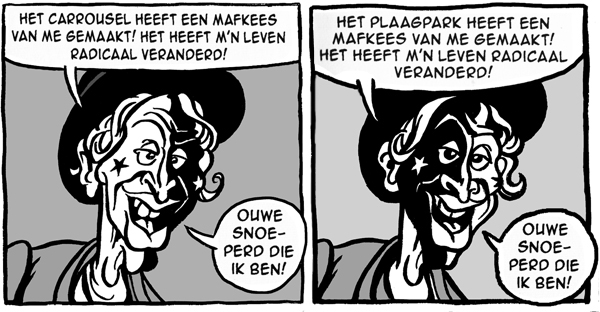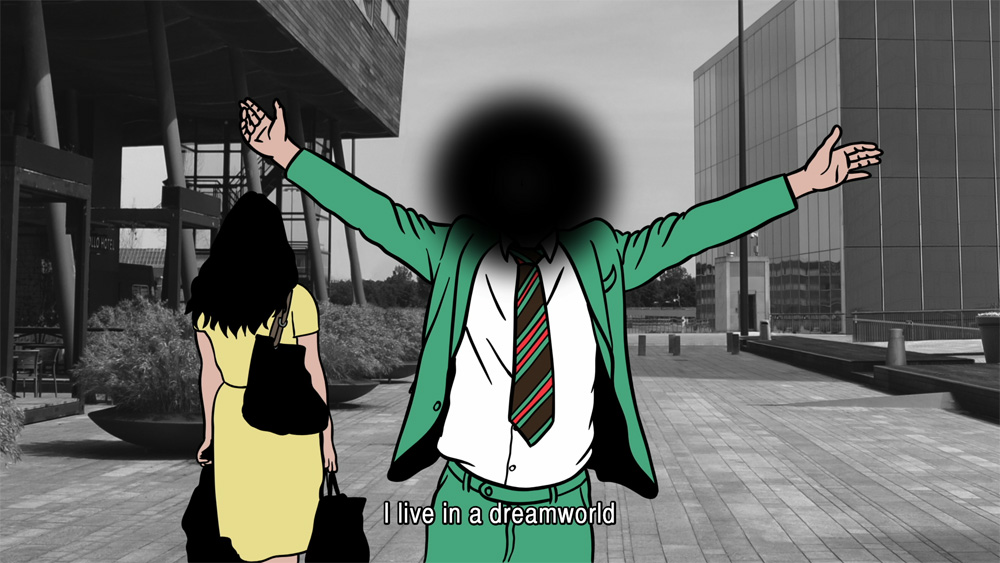Plaagpark
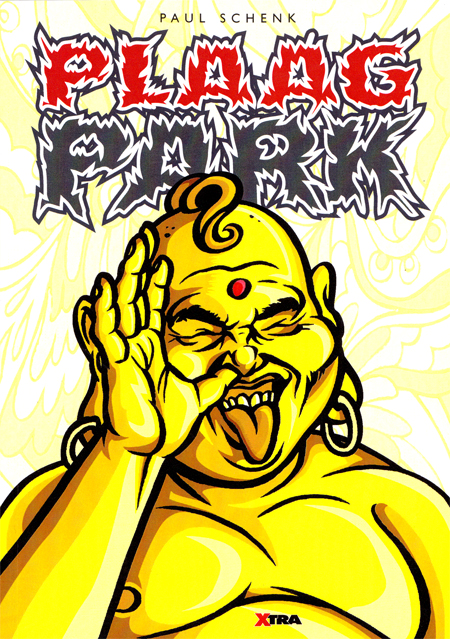
© Uitgeverij Xtra
Dutch version: HERE
Plaagpark is a 80-page underground graphic novel made in 1992-1995, originally called Bindoesara but published by Xtra under the name of Plaagpark. It tells the story of two opposite characters: Neo-hippy Simon and anthropology-student Kithara.
The first half exists of tow separate story lines, the story of Simon and Kithara’s. Both tales seem to have nothing in common, until they meet.
Just like the film I was making around the same period, Abraham’s chocoladetaartje (Abraham’s chocolate cake, 1992), I was experimenting with a way of directing and storytelling that was very much inspired by the works of Italian filmmaker Michelangelo Antonioni: Long drawn-out scenes in which apparently nothing happens. It seems as if there is no real story being told, but this is far from the truth.
There’s no silence at all in the extremely busy drawing style and very busy adventures of Simon Kithara. At the same time, there seems to be no clear storyline in the whole first half of the book, which is all done on purpose.
Just like in the film Abraham’s chocoladetaartje I experimented with rapid changes between absurdism (a fairground carousel behaving like a crazy twister) and extremely serious subjects (Kithara’s face gets badly disfigured) with the intention to confuse the reader.
By this a-typical approach I was breaking free from the mainstream comic book style which had been characteristic for my work during the 80’s, and paved the way to a more experimental, artistical way of telling stories; More inspired by arthouse film and literature than by comic books. With my following graphic novel Magnum Opus I continued the path of pushing the boundaries.
Simon and Kithara finally meeting eachother is the start of the very mystical second half. In this part of the story all separate parts of the first half will slowly find their place. The largest part of the second half is situated in India, in the so called „Plaagpark” („Teasing park”), a theme park constructed in the 3rd century BC by Indian ruler Asjoka, with all kinds of seemingly nice attractions. He teased them into the park and let them fall into a series of very mean traps, undergoing the most excruciating tortures and pains. This is based on a truely existing 2000-year old legend.
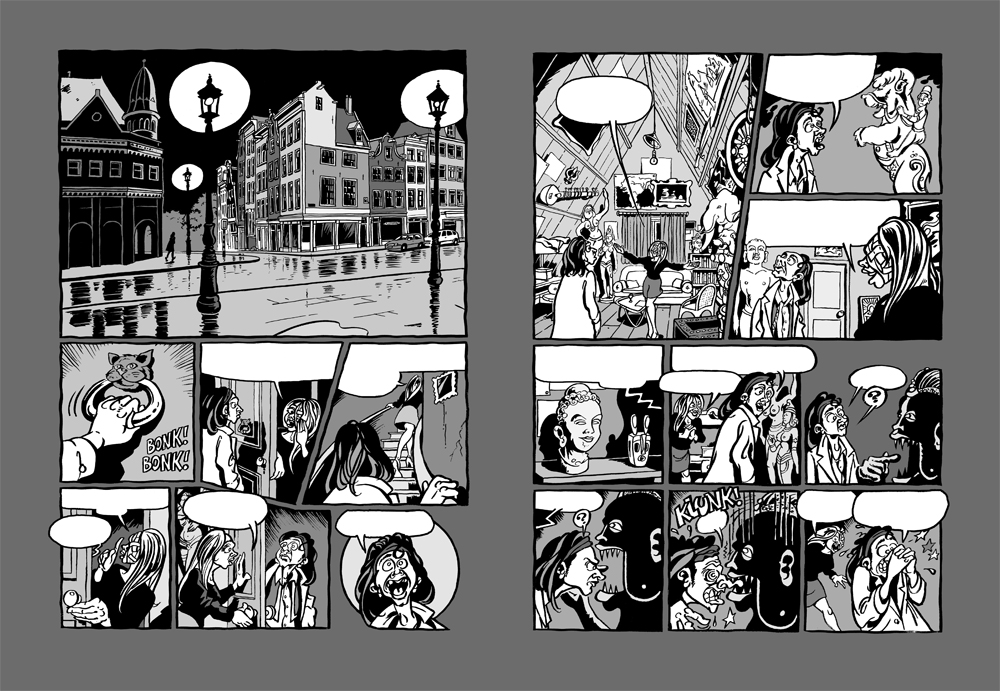
© Uitgeverij Xtra
In the story it’s not the enemies of Asjoka undergoing the pains but Simon. The „plaagpark” of Asjoka bears some resemblances to the „magical theatre” of Hermann Hesse’s 1927-novel „Steppenwolf” which is no coincidence because Plaagpark was strongly influenced by this book.
I wanted to make a similar love story but except from some similarities, both stories don’t look like each other at all. There are similarities between the two opposite characters Simon and Kithara and the „Steppenwolf”-opposites Harry Haller and Hermine. Also, the main characters in both stories suffer from hallucinations and schizophrenia (Simon meeting his clone again and again).
© Uitgeverij Xtra
Undergo the torture! Dare to suffer!
On the right: This picture of „the man with the two different half faces”, a Joker, appears two times in the story. It announces impending doom, first for Kithara, and in the second half of the story, for Simon. This stands in fact for the yin and yang-symbol, symbolizing the unity between Simon and Kithara. In the second picture the black and white halts of the Joker’s face are reversed.
Don’t be who you are!
Plaagpark is above all a story about identity and the search for it. The book opens with the words „don’t be who you are”, a sentence heard in the „plaagpark” on a regular basis. The mystical figure Bindoesara wants Simon and Kithara to fall in love with each other, but Simon has to pay a high price for this by losing his identity. During kaleidoscopic hallucinations he has to endure terrible torture to get there where Bindoesara wants him to be: To be someone who has the power to release Kithara from her problem, and it succeeds, almost killing Simon. The how and why stays a riddle wrapped in a mystery inside an enigma.
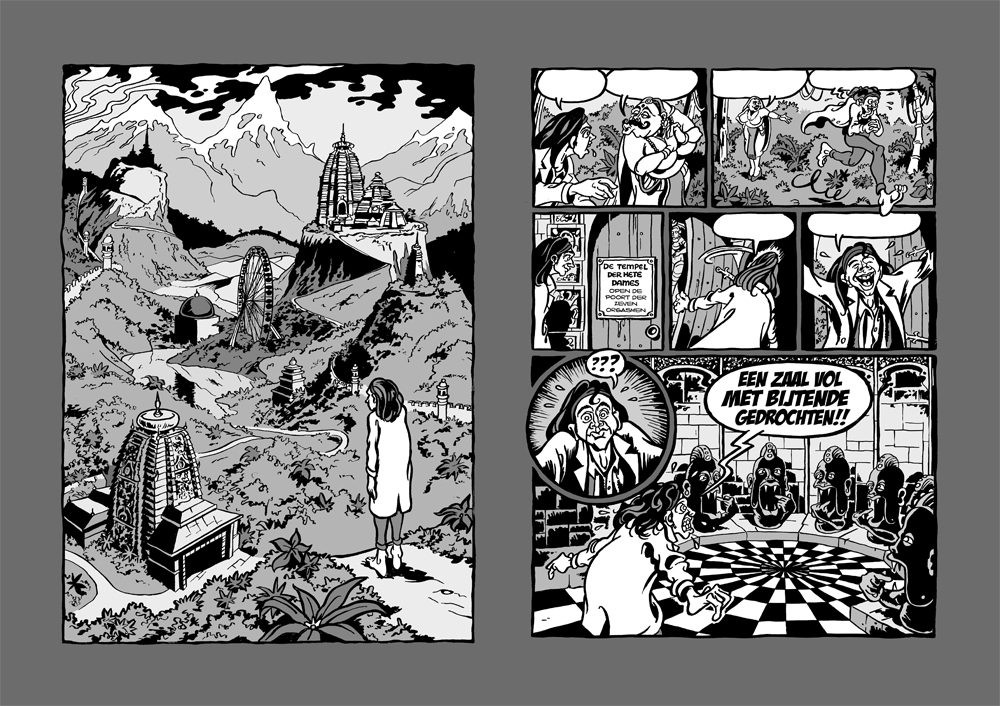
© Uitgeverij Xtra
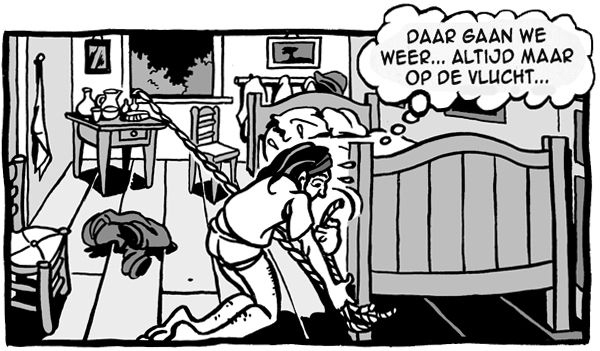
© Uitgeverij Xtra
To the left: When Simon escapes from the mental hospital we see his bedroom.This is of course Vincent van Gogh’s bedroom, a joke referring to Van Gogh’s stay in the madhouse.
Review De Boekensalon (in Dutch):
“In deze satirische in Amsterdam spelende strip spelen twee (neo-)hippies, Simon en Marius, de hoofdrol. Hoewel nietsdoen hun beroep is, wordt de lezer in vier hoofdstukken meegenomen in hun psychedelische avonturen aan de rand van een maatschappij die vijandig tegenover hen staat.
De enige troost wordt gevonden bij de antropologiestudente Kithara en het bruine café van oud-marinier admiraal Snorring. De plaatjes zijn erg klein en in zwart-wit, hetgeen een erg onduidelijke bladspiegel oplevert. En dat is jammer, want de tekenstijl is van goede kwaliteit. Achterin staat nog een biografische schets van de auteur waaruit blijkt dat deze strip veel autobiografische elementen bevat.
Cultstrip die doet denken aan het werk van Crumb en andere undergroundstrips uit de jaren zestig. Uitgave in A5-formaat.”
